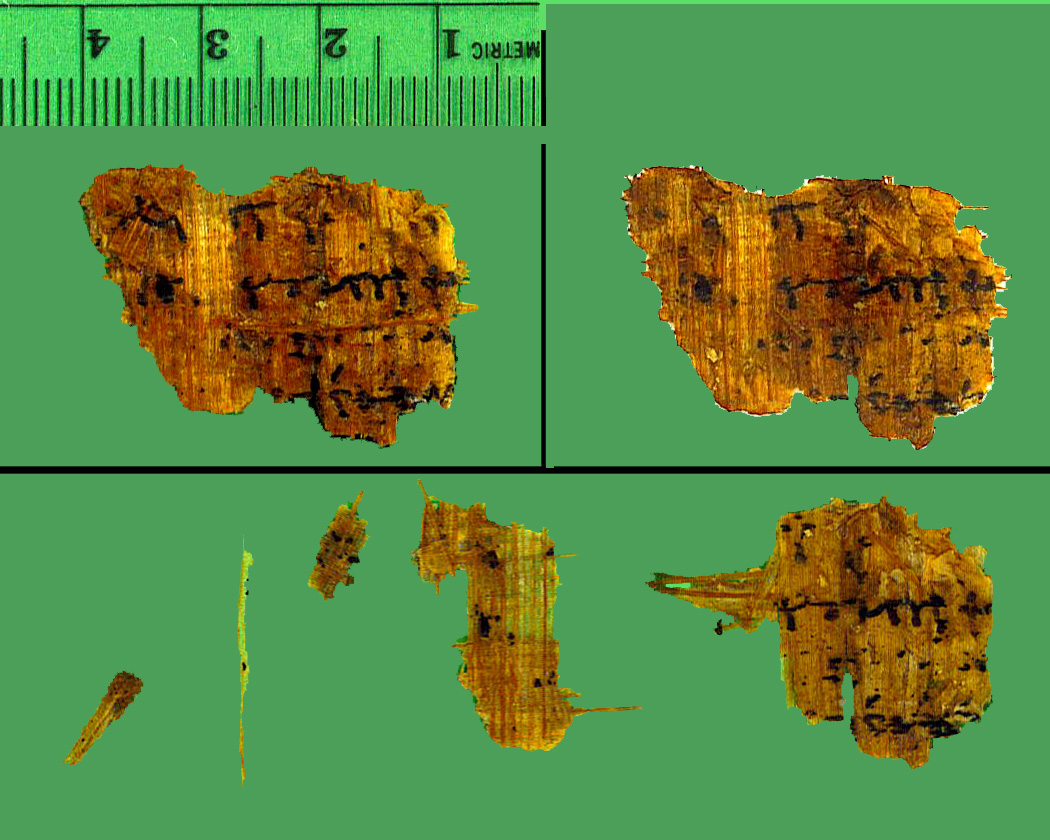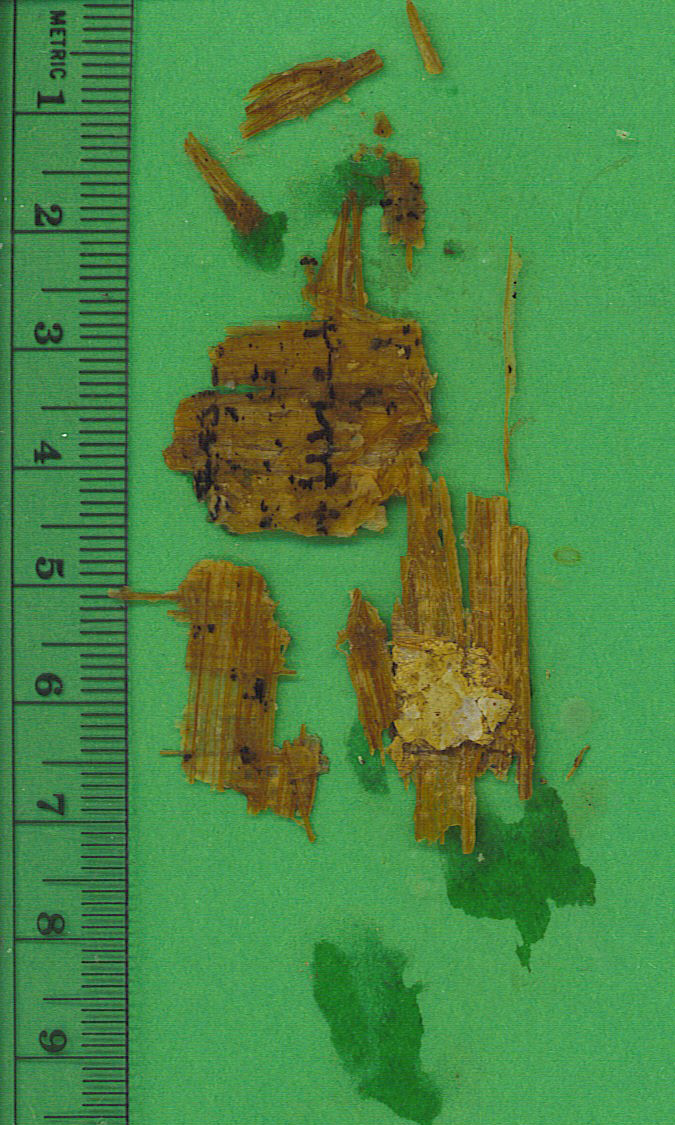
PAPYROLOGY: pKraft cart030(b)
Virginia Wayland [edited by
RAK]
October 24, 2006
1. Scanning proved the
best way to record the papyrus surface and its lettering. The
piece is an irregular tetragon on which there are traces of 4 lines of
writing visible on surface "a". The dimensions
are: top – 2.70cm, bottom – 2.28cm, vertical side – 1.50
cm, diagonal side – 2.12 cm. The writing appears to go against
the fibers (fibers appear vertical when writing is horizontal).
The writing is faint when dry. The a surface appears to be
abraded in a vertical swath 0.3 cm wide for the entire width of the
piece. On side "b", a
small irregular piece of a plaster or mud backing was clear, adhering
to the fibers. Two separate papyrus layers also can be seen below
it (left side of the image below).
3. At the end of the procedure, the piece removed from side b was soaked in isopropyl alcohol overnight. The mud/plaster backing separated easily, but crumbled into small chunks. The surface underneath contained remnants of 2-3 letters (λ? ? ?), which appear to have been written with the fibers (right side of the image below).

2. About 10 drops of
deionized water (~ 1 mL) were put on the piece and allowed to soak
through for 1 hour. The water which was not absorbed into the
papyrus became dark brown, although still transparent. The
lettering on side "a" became somewhat clearer (top left image below).

When wet, it became
obvious that a small piece of surface had shifted (from the abraded
swath?) to occur on an angle at the left upper corner of the
piece. 3 horizontal fibers at the top of the third line of
writing were removed, revealing some ink marks where they had been
against the lower surface (lower part of the image above, to the
left). The cleared surface appeart at top right, above. The lower
part of the image above shows further separation of possible layers.
The letters of line 1 are 2-3
mm high. The spaces between lines 1 and 2 are 3-4 mm. The
space between line 2 and line 3 is approximately 2 mm; between
line 3 and 4, 2-3 mm.
Line 1: κ ? . ι/ρ/? θ π τ
Line 2: ? ? . υ τ ι λ υ ι/ς ψ/φ
Line 3: {traces of 6 letters?}
Line 4: {traces of 6
letters?}. . ε ο . .
Separation of the two papyrus
layers does not reveal any writing on either side, but there is severe
splitting of the second layer.
 :
: